Enchanted by the Fervor of the Carnival
Rio de Janeiro (Brazil)
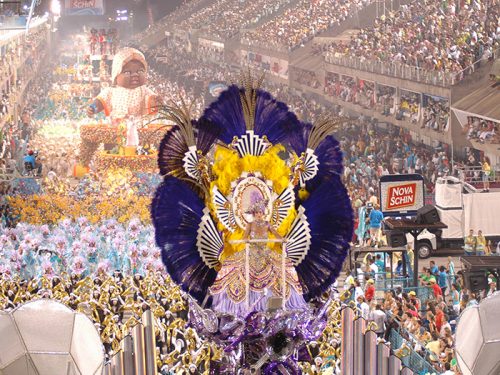
Rio’s Carnival is one of the world’s largest festivals, with dynamic music and samba rhythms, spectacular costumes, and grand performances that move not only the body but also the soul. The gorgeous floats, which take a year to design and build, and the spectacular performances by dancers and musicians captivate all who see them. Peace Boat voyages in the Southern Hemisphere provide the opportunity to call at Rio de Janeiro, where the entire city is in the midst of the Carnival, and everything is enveloped in the heat and bustle of the festival. We will introduce you to the charms of Rio’s Carnival, which whirls the world into a frenzy, and how you can enjoy Carnival the Peace Boat way.
A Carnival that Begins at Sea
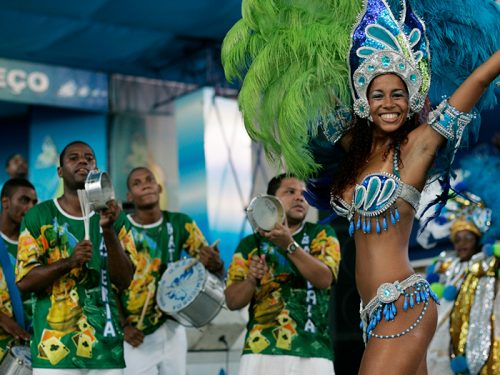
On board the ship, various events such as lectures on Carnival history and culture, live music and dance workshops will be held daily on the Atlantic Ocean en route to Rio de Janeiro. Carnival was originally a Roman Catholic secular event. Rio’s Carnival has evolved in its own unique way, blending the cultures of the Portuguese and other Europeans who settled in Brazil, the indigenous people of Brazil, and the black slaves brought from Africa. Carnival expert Shirane Zen, who also sailed on a Peace Boat voyage, describes the pageantry as a moving samba opera.

Many people come to the lecture to listen to Mr Shirane, who has visited carnivals all over the world. Knowing the origins of Rio’s Carnival and how it differs from carnivals held in other regions makes the local experience even more exciting. The parade structure, highlights, popular local teams, and other topics will deepen your enjoyment of Rio’s Carnival and also make your excitement grow.

Of course, it is the Peace Boat way to enjoy the carnival atmosphere not only through classroom lectures but also by using one’s whole body. Just before the port call in Rio de Janeiro, a “Samba Carnival at Sea” is held on board.
Livening up the festive mood on board with his wonderful music is musician Francis Silva, who was also deeply involved in the launch of the Asakusa Samba Carnival in Tokyo. He and the bateria (samba team percussionists) formed on the ship for this occasion play in unison and get the whole ship into a rhythmic whirlpool. As if guided by the bateria’s performance, the deck is soon filled with a circle of people enjoying dancing with big smiles on their faces. Becoming something a little different from your usual self and giving yourself over to the rhythm may be the best part of the carnival. Now that we’ve done our homework, finally, the ship will call at Rio de Janeiro in the midst of Carnival.
One of the biggest carnivals in the world!
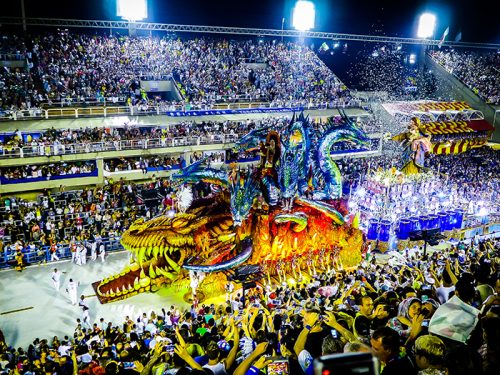
Now you are landing in the city of Rio de Janeiro, city of the carnival. The main event of Rio Carnival is the glittering parade held over four days. The spectacle is performed by parade groups known as “escolas” (samba schools) in the Sanbadrome, a dedicated Carnival venue. Tens of thousands of spectators gather to watch the parades. The Rio Carnival is also a fierce contest for the best performance of the year. For each escola, rankings are determined based on the theme, music and dance performance, the lyrics and melody of the theme song, and the design of the floats.
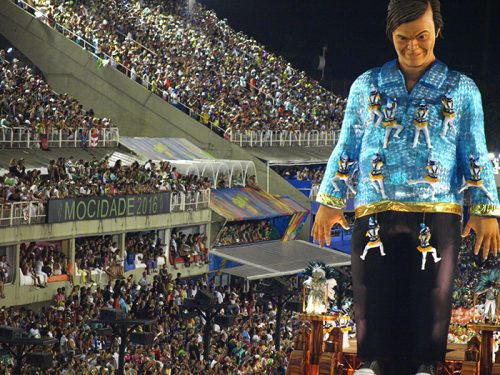
Five to seven huge floats are displayed for each escola. Between them, dance teams and percussionists called bateria enter to give performances that they have been refining for a year. The quality, presence, and sheer enjoyment of these performances convey a sense of wholehearted enjoyment. We can see why carnival critic Shirane Zen calls it a “moving opera.”
The dancers on the floats are not to be missed. All the floats are quite tall, but everyone dances with great dignity and grace. Each parade lasts about 80 minutes. During this time, the dancers dance and the baterias play music continuously.
Into the craze
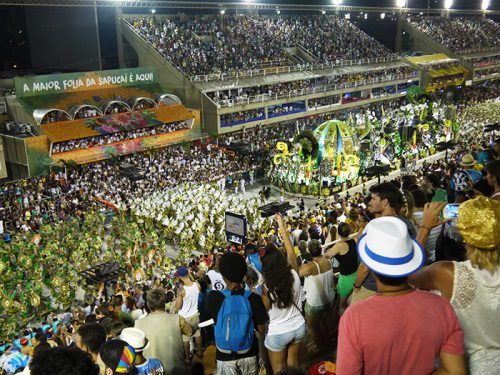
The spectators are thrilled by the dynamic floats that appear in each prade. Everyone seems to have their own favorite team, and every time a new escola team appears, there is loud cheering from all over the place.
And on Peace Boat cruises, you don’t just get to watch Carnival, you also have the opportunity to actually participate in the escola: on a 2016 cruise, several passengers joined an escola and paraded through the Sambadrome. The floodlit rhythms and the swirling excitement of the crowd is a real and uplifting experience that can never be experienced in the spectator’s seats. Not only do you get to see the carnival up close, you become part of the frenzy. The ship leaves the city of Rio with memories of a great sensation in its heart.
PHOTO:PEACEBOAT, B. Martinez www.fotosearch.j, Mizumoto Shunya, Yoshioka Hinata, shutterstock.com
